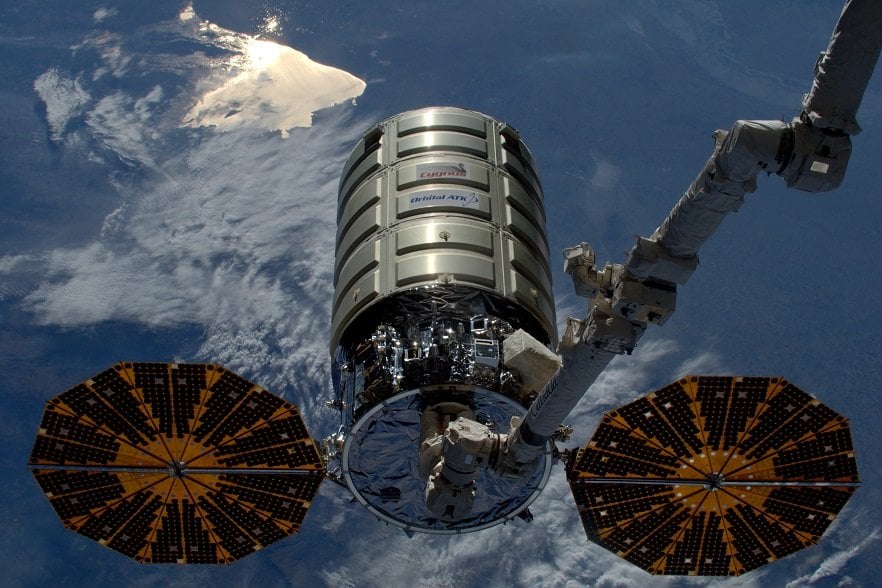VIDEO: Largest fire experiment in space

IN AN ATTEMPT to learn how fire might behave in a spacecraft outside Earth’s atmosphere, NASA has successfully conducted the largest fire experiment in space.
The experiment, dubbed Saffire I, was conducted inside an Orbital ATK Cygnus cargo vehicle that departed the International Space Station on Tuesday and is currently making its return journey to Earth. It is the first of three planned Saffire experiments.
“The success of this experiment opens the door to future large combustion experiments in the microgravity environment and directly supports the development of technologies and materials that will make deep space exploration spacecraft safer,” said Gary A. Ruff, NASA’s Spacecraft Fire Safety Demonstration Project manager.

The Orbital ATK Cygnus cargo craft is released from the International Space Station on 14 June 2016. Photograph taken by European Space Agency astronaut Tim Peake. (Credit: ESA/NASA)
Understanding how fire spreads in an environment with very little gravity is important to the safety of astronauts who live and work in space, especially as NASA prepares for long-duration missions on the journey to Mars.
The Saffire experiment took place in a roughly 1m x 1m x 1.5m-tall module and burned a sample cotton-fibreglass material approximately 40cm wide and 95cm long. NASA says that according to preliminary data, the sample burned for up to 8 minutes, during which time it traveled over 1600km.
Images and data captured from inside the module are currently being relayed to NASA’s Glenn Research Center in Cleveland, Ohio. Researchers from 10 other US and international government agencies and universities will analyse the data over the coming weeks.
Two more flight experiments are soon to follow; Saffire-II will look at oxygen flammability limits using samples that are 5cm wide and 30cm long, and Saffire-III, will assess a second large-scale microgravity fire.
Each module will be flown aboard an Orbital ATK Cygnus cargo vehicle during a resupply mission to the ISS.
RELATED:
- GALLERY: 10 amazing images of Australia from space
- The number of known planets just doubled
- NASA releases epic transit of Mercury video




